All about the temperature in the cucumber greenhouse
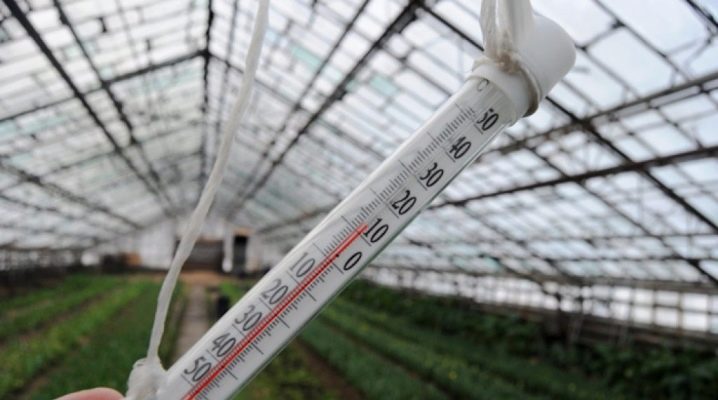
The homeland of the cucumber is subtropical and tropical India. To maximize yields, it is helpful to know all about the temperature in the greenhouse for cucumbers, especially if they are grown commercially.

The importance of temperature
Different garden crops have different requirements not only for specific temperature indicators, but also for the strictness of their observance. For example, the tomato is relatively hardy, therefore, its adaptive capabilities are higher. The temperature in the greenhouse for cucumbers is a key factor in growing them. It directly affects fruiting.
Nighttime temperatures are just as important as daytime temperatures. For example, the range of desirable night temperatures for a cucumber is + 18 ... + 22 ° С. If you adhere to the highest value in this range, the plant will more actively pour fruits, the harvest will return faster.
If you maintain the lower value, + 18 ... + 19 ° C, the bushes will redirect forces to the roots and shoots - in this way, you can stretch fruiting for several weeks.
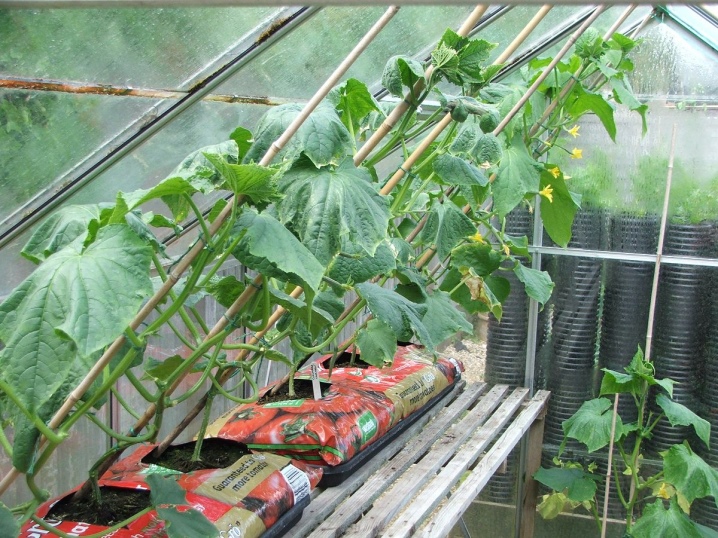
Low temperatures are destructive for cucumbers, and overheating (during the day - above + 30 ° С, at night - above + 24 ° С) starts the aging process: the plant is quickly depleted.
Optimal performance
Air temperature required at different times:
-
germination of seeds in closed containers - + 25 ... + 28 ° С;
-
barely appeared seedlings grow best at + 20 ... + 25 ° С;
-
growing seedlings is permissible at + 20 ... + 22 ° С;
-
flowering period - + 25 ... + 28 ° С;
-
ripening of the crop - + 25 ... + 30 ° С.
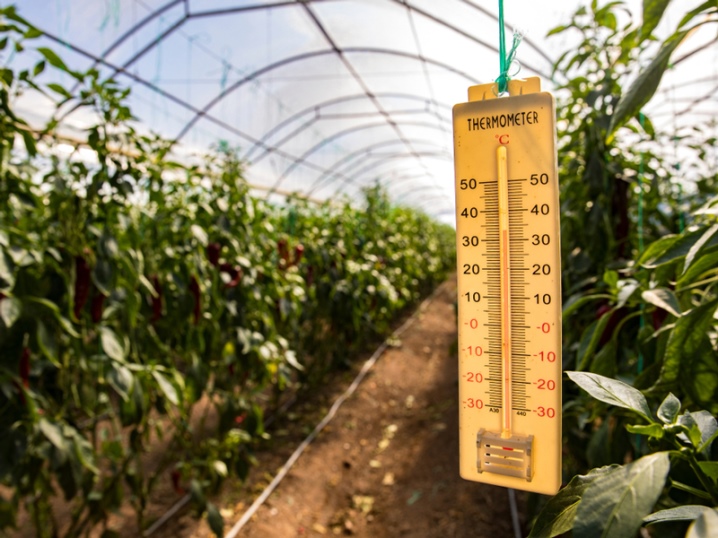
It is not necessary to adjust the temperature to the nearest degree. It is enough to follow these ranges approximately. The contrasting temperatures are unfavorable for both seedlings and adult plants.
It is important to remember: the average comfortable temperature for the culture is + 20 ... + 22 ° С.
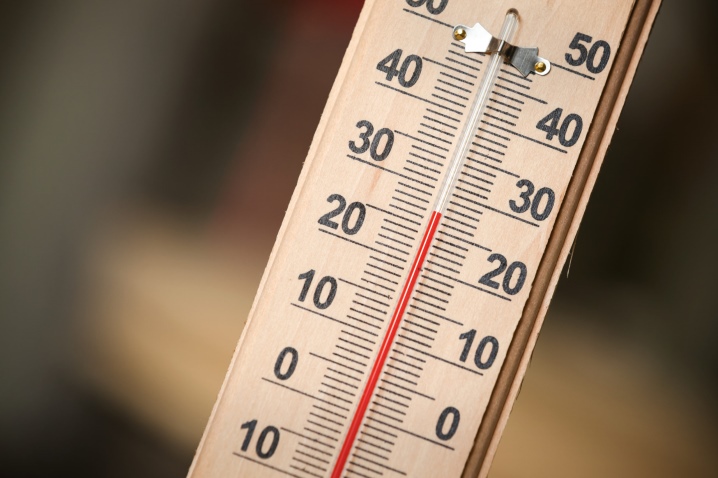
The minimum indicator, including at night, is + 16 ° С. During the period of ovary formation, a decrease below + 19 ° C is undesirable - the cucumber will stop tying future fruits.
The maximum comfortable temperature for a cucumber is + 30 ... + 35 ° С. At + 35 ° C and above, the plant will stop forming ovaries, and the existing cucumbers will begin to dry.
The range of + 10… + 15 ° С is critical for cucumber. Plants do not freeze, but they stop growing. And at + 10 ° C, growth arrest may already be irreversible if it lasts longer than 3-5 days. The complete death of plants occurs at + 8 ... + 9 ° C for two or more days. A short-term drop to + 5 ° C will kill the plants in 1 day.
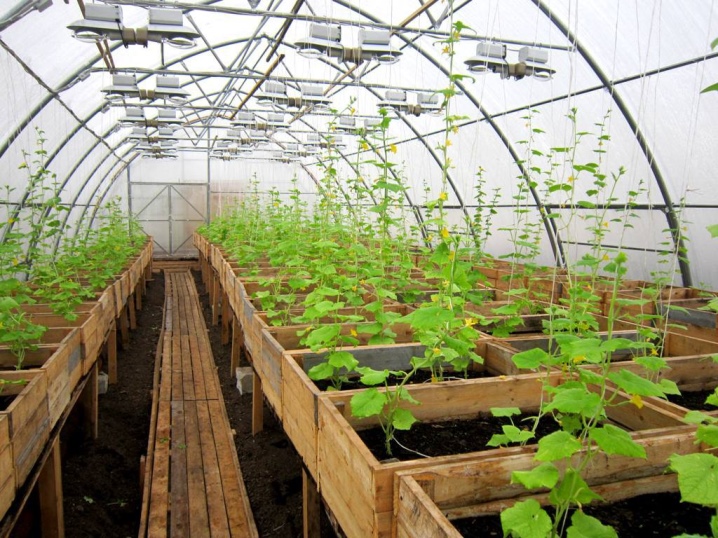
In unheated greenhouses in some regions of the Russian Federation, such temperatures are possible even at the beginning of summer. Regular inspection will help prevent plant death. If the leaves are a little withered and sag in the morning with "rags", then the night temperature is too low.
The soil for planting should also be warm - approximately + 18 ° С, but not lower than + 16 ° С. The upper favorable limit for the soil is + 35 ° C, at this temperature the roots slow down their work, the leaves begin to wither.
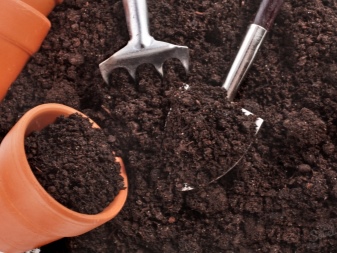
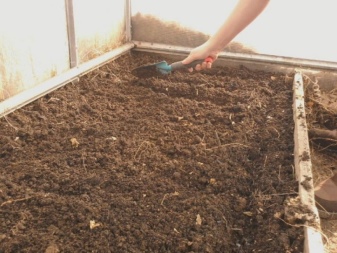
Seeds are planted in the soil, which has a temperature of + 24 ... + 28 ° C. These are the best conditions for friendly seedlings. The lower comfort limit is + 16 ... + 18 ° С. Seedlings may begin to appear even at + 14 ... + 15 ° С, but germination will be very slow and uneven, and future plants will be weak and unproductive. If it is necessary to plant in cold conditions, at least bottom heating should be provided. Soil temperature below + 12 ° C will be destructive for seeds - they will simply become moldy and then rot.
For the growth of cucumbers, the soil temperature is maintained in the same ranges. The soil should be warmed up to at least + 16 ... + 18 ° С both day and night.
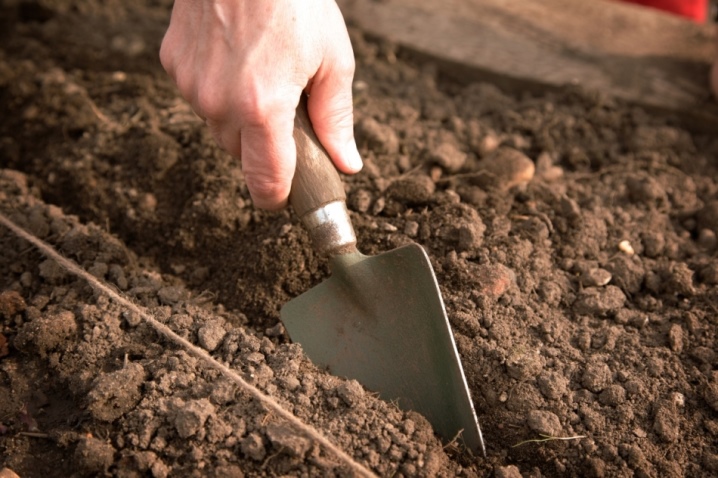
The resistance of the plant to cold air strongly depends on the temperature of the soil. If the soil is not colder than + 16 ° C, then a young plant is able to withstand even a daily drop in air temperature to + 5 ° C without any consequences. In warm beds, cucumbers sometimes even withstand a decrease to + 1 ° C for a couple of days.
Before planting in a polycarbonate greenhouse, it makes sense to harden the plants. 10 days before the day of disembarkation, the air temperature is reduced to + 16 ... + 17 ° С. Reduce watering 3 days before planting. Unhardened seedlings can die if the soil temperature drops to + 15 ° C.

Fruiting plants require the same soil temperatures, but they are slightly more hardy.
The water for irrigation should be warm, about the same as the soil.
When and how to regulate?
The critical period usually occurs in late May - early June. Young plants are less hardy and die more often than adults. In many regions of the Russian Federation, late spring is a period of warm, fairly stable weather, which tempts gardeners with the appearance of the opening of the planting season. But there is a possibility of short-term cold weather. For example, in the Urals, the air temperature can drop to 10 ° C.
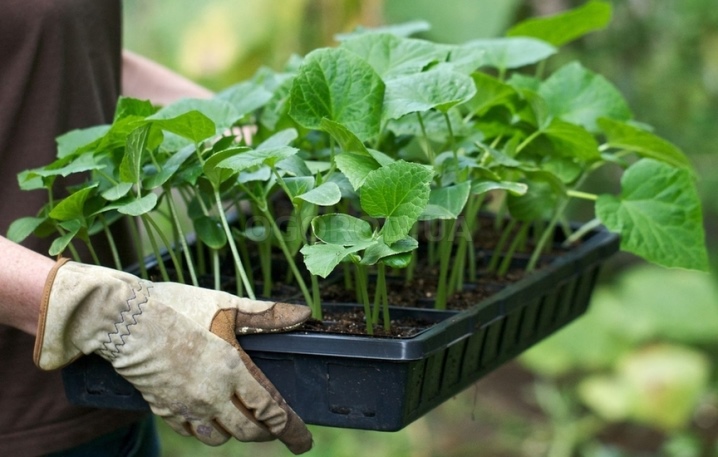
They regulate the microclimate with the help of transoms and doors, film screens. While the plants are not tied up, they can be covered with non-woven materials.
Doors and vents are enough to open and close in time. So you can not only protect plants from extreme temperatures, but also level the night-day regime. The timing for opening and closing should take into account that the effect will be delayed. In late spring - early summer, the vents should be closed no later than 3 pm, in the middle of summer, when it is very hot, no later than 6 pm. For gardeners who do not have time for this work, there are machines with temperature sensors. Their cost varies between 900-3000 rubles.
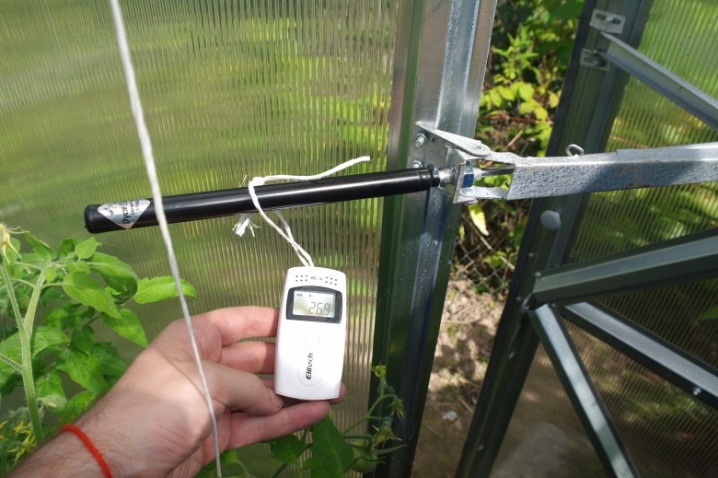
It is better to embed the transom in a continuous row on both sides of the roof, but this design is considered too overhead.
Any method that creates a layer of isolated air will work to raise the temperature. Most often, ordinary film is sufficient.
If the forecast promises destructive weather for cucumbers, a mini-greenhouse can be organized in the greenhouse from the simplest frame and perforated film.
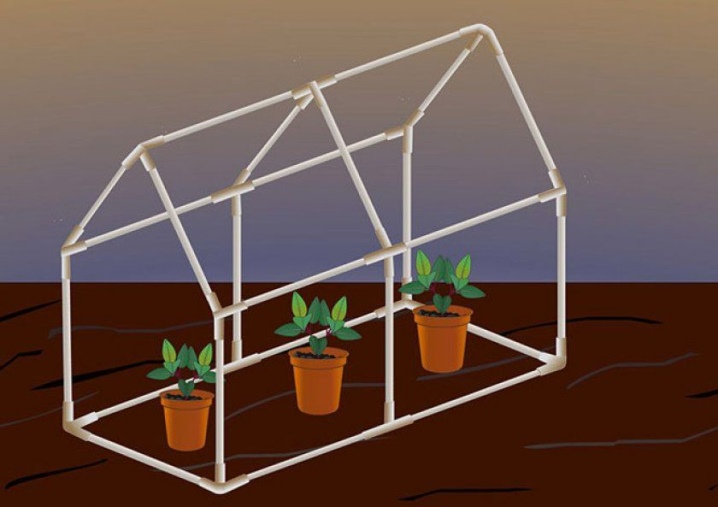
The soil is protected from temperature extremes and hypothermia with mulch. Let's describe the best options.
-
Black film with perforations and holes for cucumber seedlings. The only negative is that in the bright sun such a film can overheat.
-
A transparent film without holes is used for seed germination. It allows you to create a mini greenhouse - the seedlings will appear in a few days. Then it is changed to dark. The transparent film retains heat up to 4 ° C during the day and up to 8 ° C at night.
-
Peat, finely chopped straw, hay, grass, sawdust, pine needles. All these materials are used only if the seedlings are planted high. The method simultaneously allows you to equalize the humidity regime.
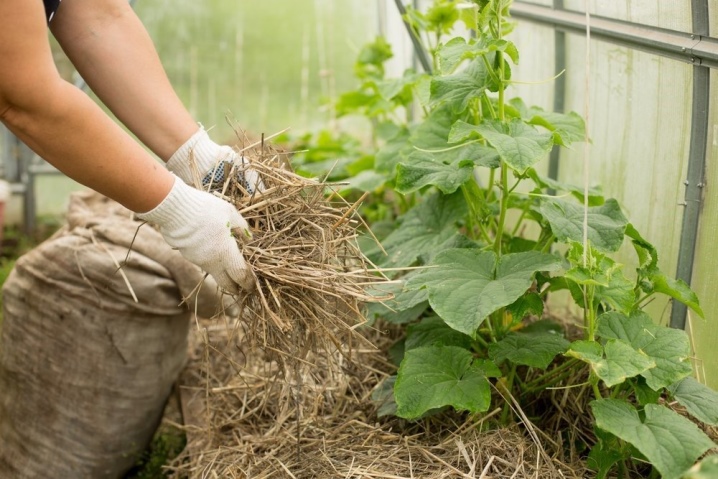
Heat is not as critical as cold, but it can be dangerous. Fans are installed to combat overheating. But there is a nuance - cucumbers do not tolerate drafts. Therefore, units operating with large volumes of air and low speeds are placed in greenhouses. Installing an exhaust fan can also help, which avoids the collection of condensate on the walls of the greenhouse and waterlogging of the air. Ordinary household fans are suitable for occasional use. At the peak of solar activity, 2 fans installed on the central path of the greenhouse reduce the temperature by 3-6 degrees in 30-40 minutes.

An open window can lower the temperature in the greenhouse by 12 ° C, but this may not be enough in extreme heat. Greenhouse end walls are sometimes partially or completely covered with a softer material than polycarbonate. It can be spunbond, greenhouse mesh, regular film. On hot days, they are simply folded and secured, completely opening up air access.
Any methods related to air humidification can be used.
-
Normal fine water spray. Reduces temperature by 3-4 ° C.
-
Sprinkling the walls of the greenhouse. In extreme heat, this technique can lower the air temperature by 13 ° C.
-
Watering paths in the greenhouse.
-
Additional watering has a positive effect on cucumbers in the heat. They moisturize them not only in the evening, but also in the morning. Then the greenhouse is ventilated to avoid waterlogging. This figure should be kept within 70%.

On average, additional humidification reduces the air temperature by 8 ° C.
To equalize the temperature, use dark-colored cans of water. During the day they are placed in the bright sun, at night they are brought into the greenhouse. They accumulate solar heat and gradually release it into the air at night. You can install a barrel of water in the greenhouse; on a hot day, the water heats up quickly and partially evaporates, cooling the air in the room. The warm water can then be used for irrigation.
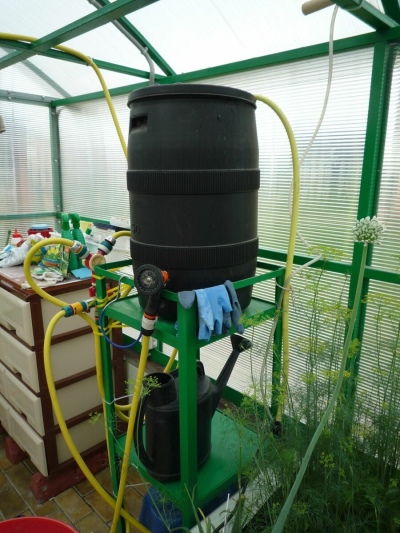
To eliminate overheating of the greenhouse in the bright sun in the middle of summer, the following methods are used.
-
Raising the greenhouse on supports for ventilation from below (only for small greenhouses, without a foundation, and in calm areas).
-
Covering with light-colored fabric, shading mesh, non-woven fabric. The shelter is fixed with ordinary bricks, stakes, cords with weights.
-
Internal roll-up screens made of spunbond. They are hung on rows of wire from the inside of the greenhouse. Plus - they won't be blown away by the wind. Cons - they limit the access of light to the plants (although this is not so critical - the light still penetrates the walls of the greenhouse).
-
External screens made of covering materials.
-
Screens made of plastic or wood. They resemble blinds, conveniently fold and unfold.
-
Placing or hanging frozen water bottles in the greenhouse.
-
Spraying with a solution of chalk (1 glass of chalk per 10 liters of water), in contrast to water-emulsion paint, such a whitewash is easily washed off. Spray so that the result is streaks and not a solid spot.
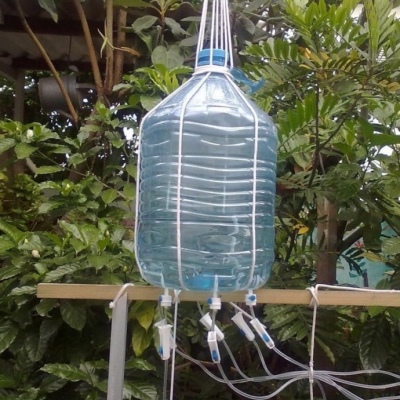
You can vary the temperature for cucumbers in the greenhouse using combinations of different methods. In many cases, the issue can be resolved even at the stage of choosing a greenhouse. For example, in Siberia, it does not make sense at all to take designs without vents. The climate is sharply continental with contrasting temperatures. The scorching sun in June-July is so difficult to compensate without a high-quality cooling system that the yield will ultimately be less than in warm beds in the open field.
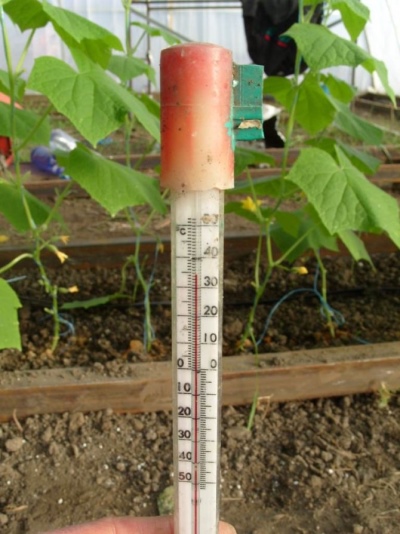













The comment was sent successfully.